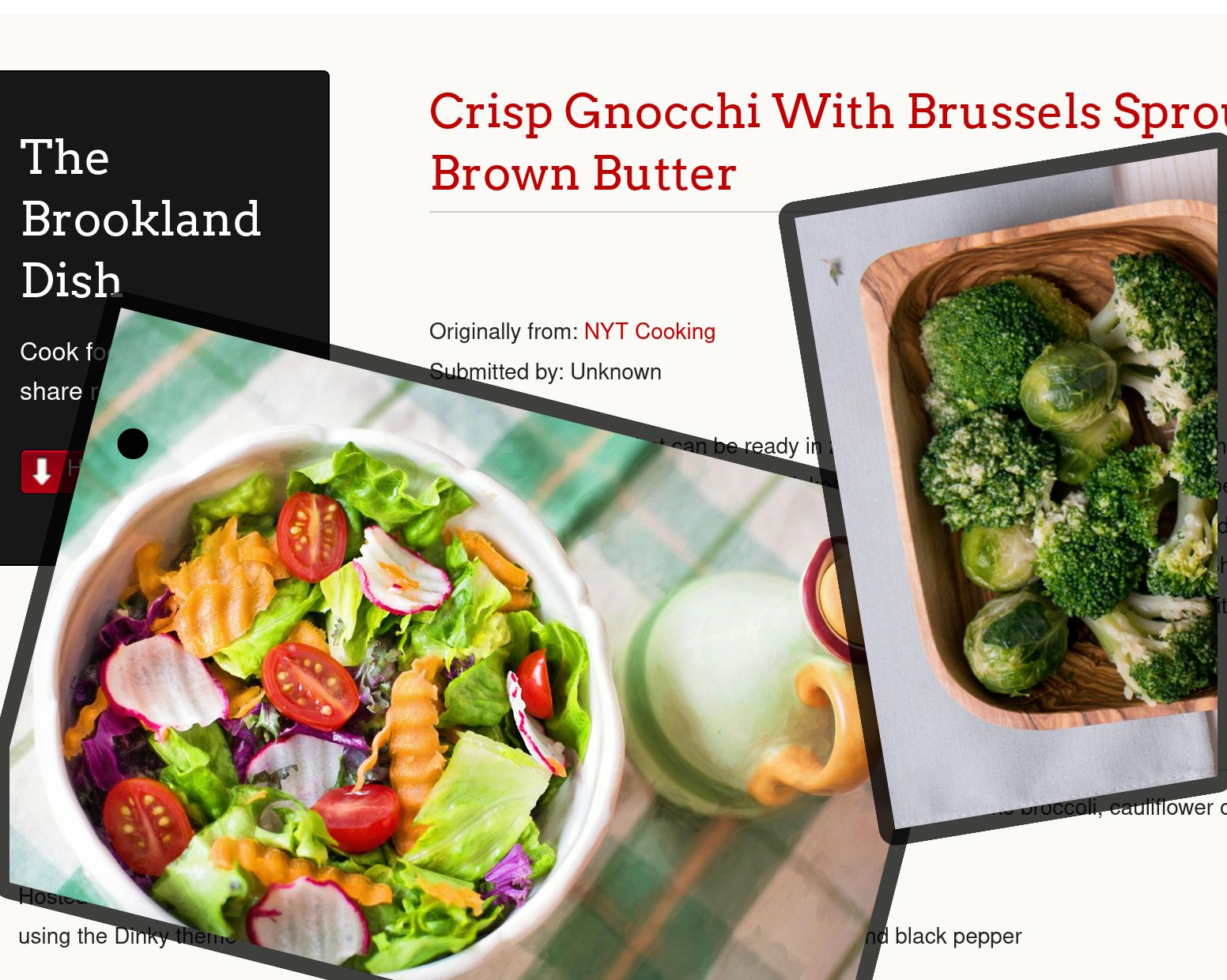Projects
-
2025, Wrapped

2025 has been … well, it has been one of the years of all time, I can say that. Personally and professionally, I have achieved a number of my goals. The wider world? I’m not sure I even have the words to describe how I feel about … everything, and I live in Washington, DC, the center of everything, so I’ve theoretically had a lot of time and energy to devote to figuring out how to talk about it. I still can’t.
So I’m sorry, but I won’t. It feels like an abdication of responsibility to not, but please know that it’s not me saying that everything is fine, but that I just don’t feel equipped to face the enormity of everything on a little blog about Python and Javascript. And if this feeling doesn’t resonate with you, please go read some news. The Guardian, Al Jazeera, and ProPublica are good places to start.
Okay, we’re back? We’ve read all news reporting published in the past year? Great. We can now move on.
My personal year in review
At the beginning of last year I set a few professional goals:
- Get promoted
- Apply to speak at 12 conferences
The first goal, “get promoted,” was not a “good” goal, in the sense that it’s not a goal I have control over. I can do as much as possible to try to put myself in a good position to get promoted, by taking on more ambitious projects that align with my company’s career ladder, by putting myself forward and “managing up,” etc,. but ultimately, whether this goal happens or not is not up to me.
The good news is I got promoted in March, which meant I could coast for the remaining 9 months of the year. (I promise this is a joke, in case my manager is reading this.)
The second goal, “apply to speak at 12 conferences,” was a goal that I had complete control over. And I applied to 16 conferences, so I suppose I did alright.
Of those 16 applications, 5 were accepted, 5 were rejected, and 6 are still pending. This is definitely not me right now:
 But for real if you run one of these conferences, get back to me, ok?
But for real if you run one of these conferences, get back to me, ok?Those were the only professional goals I set, but I suppose I hit a few other milestones:
-
In addition to the conferences I applied for, a few folks reached out and asked me to participate in things, so in 2025, I gave a total of 10 talks, podcast/panel appearances, and guest lectures. This is fun. People should reach out to me more.
-
I published 39 blog posts this year (not all of which were meta-posts about Jekyll, as much as it feels like it). This one will make 40, and will probably be my last post of the year.
-
Oh, I (and four other women) started a nonprofit. Minor detail. Women and Gender eXpansive Coders DC is officially a 501(c)(3), thanks to a lot of paperwork and help from a pro bono legal team that we look forward to publicly thanking as soon as our bank account/donation infrastructure is set up.
As a woman in the tech world I cannot stress enough how important it is to me to have access to a community of people who look like me. Work has a lovely ERG that I’m part of, but I’m grateful to also have this access to a community outside of work. And you know what they say – if you can’t find a community, start your own. Do they say that? They should.
A lot of the energy of 2025 was sucked up by the actual logistics of starting a nonprofit, but we hosted a number of career events, brunch and dinner socials, Craft n Crush events, and a very cool book club where the author joined us for the last session. I taught a session on the command line (with help from two co-organizers/TAs who I couldn’t have done without) and organized a livecoding session where we made music with Hydra. I’m already looking forward to what we will do in 2026.
My goals for next year

I’m not aiming to get promoted in 2026. People at my company usually stay at my level for at least another year, so this is reasonable. This gives me the space to focus on other goals.
One thing I really want to get better at is measuring the impact of my work. This is obviously a great thing to do for one’s own career, because putting “I built a feature that made the company one miiiiillion dollars” on your resume or annual review is more impressive than “I closed some tickets.” But I think it’s also a useful skill in general, because knowing impact means I’m working on the right things.
One lucky break for me is that I won a drawing for an O’Reilly book at Techbash and chose The Product-Minded Engineer. Hopefully this book contains a few tips. I’d be grateful for any other thoughts readers might have on this topic.
My other goal is to speak at four in-person conferences. I realize this is not fully under my control, but I do have some levers. I can make sure I’m applying for in-person (not just virtual) conferences, continue to iterate on my talks, and network with other successful speakers. And if you are reading this and run an in-person conference, you can invite me to give a talk :)
That’s it for this year. Thanks for reading. Please, donate to your local mutual aid groups, volunteer somewhere to make the world a little better, and be excellent to each other.
-
Building a Cookbook in Python, for Reasons (Part 2)
In my last post, I talked about building a cookbook/recipe blog that stores recipes emailed to a special address. I talked about setting up the backend, the service that provides an ‘email received’ webhook, and the library that parses recipe information from a website using the Schema.org standardized schema.
Where we left off, we had just grabbed all the information about a recipe – name, ingredients, cook time, etc., and dumped them into a Python dict. Now, we can inject them into a Markdown template for use by Jekyll.
Loyal readers of this blog know that I’m a huge Jekyll fan. It’s so easy to create new static HTML files from a basic template.
In my case, the template looks something like this:
--- layout: post title: {{title}} source_site: {{source_site}} source: {{canonical_url}} ....and so on --- ### Ingredients {{ingredients}} ### Instructions {{instructions}}Everything between the
---lines is considered “front matter” and can be used as data to be injected into a post, or metadata about a post, etc.Our
templatizerjust needs to read in this file and call a bunch ofreplace()s. It looks something like this:RECIPE_TITLE = "{{title}}" RECIPE_SOURCE = "{{source_site}}" RECIPE_URL = "{{canonical_url}}" with (open(TEMPLATE_FILE, 'r') as template): buffer = template.read() buffer = buffer.replace(RECIPE_TITLE, recipe.get("title")) .replace(RECIPE_SOURCE,recipe.get("site_name")) .replace(RECIPE_URL,recipe.get("canonical_url")) #and so onThe templatizer also generates a file name based on the slug of the recipe and the date it was shared (not the date it was initially posted on the source site). Anyway, this is all relatively simple.
But now we have to… dun dun dunnnnnn talk to Github.
Talking to Github
I wanted a human in the loop here. This is not a high-traffic application and my endpoint is semi-insecure, so if someone were to start spamming it with junk data…there’s not much they could accomplish, but there’s less they can accomplish if I have to manually approve every recipe first. So while it’s fairly easy to force-push directly to main with the Github API, I wanted my app to create a PR instead.
It could be worse, Github’s documentation is pretty good, and they make it real easy to make a scoped personal access token just for the actions you need to take. I won’t walk you through every step of code that needs to happen here, but the general steps are:
def do_github_stuff(content, filename): #i'm good at naming things main_sha = get_branch_sha("main") # gets the hash of the tip of main new_branch, new_ref, branch_name = create_new_branch(main_sha) #creates a new branch off of main, basically the same as doing git checkout -b newbranch. I'm generating the branch name inside this function but if it's easier to understand, just imagine that instead of returning the branch name, I'm passing in "newbranch" new_sha = create_tree(new_branch.get('object').get('sha'), content, filename) #adds my new file to the new branch new_commit = create_commit(new_sha, main_sha) #creates the commit; unlike doing a commit via command line, we explicitly have to tell git who the parents and children of the commit are. this returns a new hash update_ref_pointer(new_ref, new_commit) #now we have the new ref (/heads/mybranch/) and the new hash of the commit, this forces the tip of the new branch to point to the newly created hash create_pull_request(branch_name, filename) #the second argument here is actually the name of the PR, which in this case is just generated as f"adds {filename}"That feels like a lot, and in some ways it is, but in other ways it’s just five POSTs.
All I can say is thank goodness I watched that presentation about git commit hashes earlier this year or this would have been significantly more difficult.
The frontend
I did the basic Github Pages/Jekyll setup. In doing so, either I missed a step, or the setup is missing some steps. When I clicked the setup button, I got:
- a repo with a deploy github action that installed the wrong version of Ruby
- nothing else? So then I did
jekyll newon my local machine to spin up a new site, but the default settings inconfig.ymlweren’t appropriate for a site hosted on Github Pages. It turns out that Github does have docs on how to configure Jekyll, but I wish the button did more of this for me.
Anyway! Did manage to get up and running, finally. However, only a handful of the Github Pages-supported Jekyll themes are set up for blogs. (Minimal, minima, and hacker, for those keeping score). If you want to use a different theme, you’ll have to override some theme defaults. Which is fine, there’s excellent documentation on Jekyll’s site about doing so.
So now this thing is hooked up! We just have to subscribe our email robot to our listserv and wait for the recipes to come rolling in.

Nobody has posted a recipe! This is a disaster! No, actually it’s just a pretty low-traffic, and it shouldn’t be surprising that three days in we have nothing. But I’d like to seed the site with some examples so it’s not just empty.
This listserv has been hosted on Google Groups for the last few years (we are currently in the process of de-Googling due to unrelated issues), and say what you will about Google, they at least do let you export your data. As a moderator of the listserv, I have access to the entire group’s message history. So I made a Google Takeout request.

A few days later, a zip file containing my data was sent to me. All the messages are there…as one giant
.mboxfile.Luckily, this is a solved problem. Using this gist as a reference, I was able to parse every email and look for ones that contained URLs. Pulled about 10 random ones out and fed them to my API, which was able to successfully parse half of them, anyway that’s how I ended up becoming a contributor to the recipe-parser library.
In all seriousness this was a very rewarding project. I love when something comes together in a weekend or two (it’s taken me longer to write up this series of posts than to actually create the project), and I love when tech can be used to make something not that scales to a billion people, but solves a specific problem for ten people. Or maybe just even me, I’m not sure the rest of my potluck group cares. :) But I got to learn about FastAPI, email webhooks, and get more familiar with Jekyll. I count that as a big, delicious win.
-
Building a Cookbook With Python, for Reasons (part 1)
📖 + 🐍 = ?
*Note: This is a longer writeup of the project I presented at PyLadies 2025. If you want the bite-size version, watch it here.
I’m part of a monthly potluck that organizes meetups over email, then meets in person to eat delicious vegan food. (I’m not vegan, but I love any excuse to try new recipes and eat more plants.) Occasionally, potluck members will email around a link to the recipe they used or are planning to use.

Pretty common thing, but I wanted to capture these recipes in a more permanent way than a link to a random blog in a mailing list archive. Link rot is a thing, plus it’s just not very fun to have to search old messages and try to remember when that delicious soup recipe was sent around – was it this year or last?
I had an idea pop into my head at over the summer (I love when these things happen) that I could automatically post recipes to a new blog, when they were posted to our listserv. So then I spent the next two weekends making it happen.
I’ll discuss how I built it in a series of posts (the writeup is far too long for a single post). Today’s post is about the overall stack, as well as the FastAPI backend.
The stack
We need an email address that will serve as the “listener” to notice when new recipes are posted and do something with them. This could be anything but I may as well buy a domain and then I can host the blog there as well. So I went to Cloudflare and bought
brooklandrecipe.party.We also need a backend that can do the “something” when a new email comes in. Based solely on the fact that the first recipe-parsing library I found was written in Python, I chose to use FastAPI, which is a lightweight Python backend. This turned out to be an excellent choice.
We need a way for the email listener to talk to the backend. I found ProxiedMail, which has incoming email webhooks.1 And it’s got a free plan. Fantastic. Now when anyone sends an email to
[email protected]2, we can make a POST request to our new API.And we need a frontend, preferably one that updates with (minimal) intervention from a human. Jekyll with Github Pages is great for this. Posts are built in markdown and upon a successful merge to
mainthe site automatically will build and deploy.Basically, we need this:

Those are all the parts! Let’s see how they fit together.
The email and the backend
As previously stated, I set up
[email protected]3 to post back on receipt of an email. We can inspect the shape of the payload before doing anything, by instead setting the postback destination to a free4 URL on webhook.site. This shows us the shape of the payload, which I have shortened by removing the boring stuff:{ "id": "A48CF945-BD00-0000-00003CC8", "payload": { "Content-Type": "multipart/alternative;boundary=\"000000000000a4a98d063b045239\"", "Date": "Mon, 28 Jul 2025 17:53:20 -0400", "Mime-Version": "1.0", "Subject": "test", "To": "[email protected]", "body-html": "<div dir=\"ltr\">hello</div>\r\n", "body-plain": "hello\r\n", "from": "Rachel Kaufman <my-email>", "recipient": "[email protected]", "stripped-html": "<div dir=\"ltr\">hello</div>\n", "stripped-text": "hello", "subject": "test" }, "attachments": [] }This is going to post to our backend REST API built with FastAPI. FastAPI uses Pydantic to define types under the hood, so we can design our endpoint’s desired input like:
class EmailPayload(BaseModel): Date: str from_email: str = Field(..., alias="from") stripped_text: str = Field(..., alias="stripped-text") recipient: str = Field(..., pattern=pattern)Notice those “alias” fields; this is a cool FastAPI/Pydantic trick to change any string input to valid python. (
stripped-textisn’t a valid name for a variable in Python, even if it’s valid as a JSON key. And I aliasedfromtofrom_emailjust so I had a clearer picture of what that variable represented. Although now I think I should have called itsender….Oh well.)The actual logic is pretty simple. We need to get the text of the email, check if it contains a URL. If it does, we need to check if that URL is for a recipe (and isn’t just a link found in someone’s signature for example). If it is a recipe, we need to scrape the recipe data, create a Markdown file with the recipe data in it, then send that Markdown file to Github in the frontend repo.
Putting it all together it looks like:
@app.post("/my-route") async def parse_message(message: IncomingEmail): message_body = message.payload.stripped_text message_sender = message.payload.from_email.split(" ")[0] recipe_url = contains_url(message_body) #a pretty simple regex that returns the first match if found or None if not if not recipe_url: return {"message": "no url found"} recipe = parse_recipe(recipe_url) #uses the recipe_scrapers library and returns a dict if not recipe: return {"message": f"no recipe found at URL {recipe_url}"} template, filename = generate_template(recipe, message_sender) #creates a blob from the template and dict make_github_call(template, filename) #actually makes quite a few github calls return {"message": "ok"}Let’s look at a few of these methods in more detail. I’ll skip over
contains_urlas it’s pretty boring.parse_recipeis also pretty simple - it just grabs the URL, resolves it, and uses therecipe_scraperslibrary to get the recipe data, such as its title, cook time, ingredients and instructions. Most recipe websites use standardized formats, codified by Schema.org so this library supports a good number of sites (but not all).Once we have our dict of parsed values, we can inject them into a Markdown template for use by Jekyll. Which I’ll discuss at a later date.
-
SO MANY services that claim to have “email webhooks” only have webhooks for message delivery events, which honestly makes sense as it is probably the much more frequent use case. But I just want to make a POST request when a new email comes in. ↩
-
Not the actual email address. ↩
-
Still not the actual email address. ↩
-
Each unique webhook.site URL can respond to 100 post requests. More than that and you’ll need to pay up. ↩
-
-
Blogs I Follow By Women In Tech
 This is how I assume all women look when they write their dev blogs. I certainly do.
This is how I assume all women look when they write their dev blogs. I certainly do.Recently, a reader wrote in1 and said that she enjoyed my blog because it’s hard to find technical blogs not written by men. I counted up all the blogs I subscribe to in my RSS reader and … yeah, there aren’t a ton.
But I do follow a few women in tech whose writing inspires me. Not all of these blogs are purely tech-focused, and not all of them update frequently, but it costs me nothing to keep their subscriptions in my feed reader, and they all are great reads when they do post.
Check them out, and if you know of great blogs by tech women that are not on this list, get in touch.
- Rach Smith’s Digital Garden
- Lea Verou
- Chelsea Troy
- Cassey Lottman
- Syscily - The Culture Coded Dev
- Julia Evans
- Cassidy Williams
- Maggie Appleton
- Daniela Baron
Again, and I cannot stress this enough – if you know of a blog by a woman or nonbinary engineer, product manager, devrel, etc., I would very much like to know about it!
-
A reader wrote in – I cannot describe how unlikely a sentence I thought this would be to write. And yet, here we are. ↩

